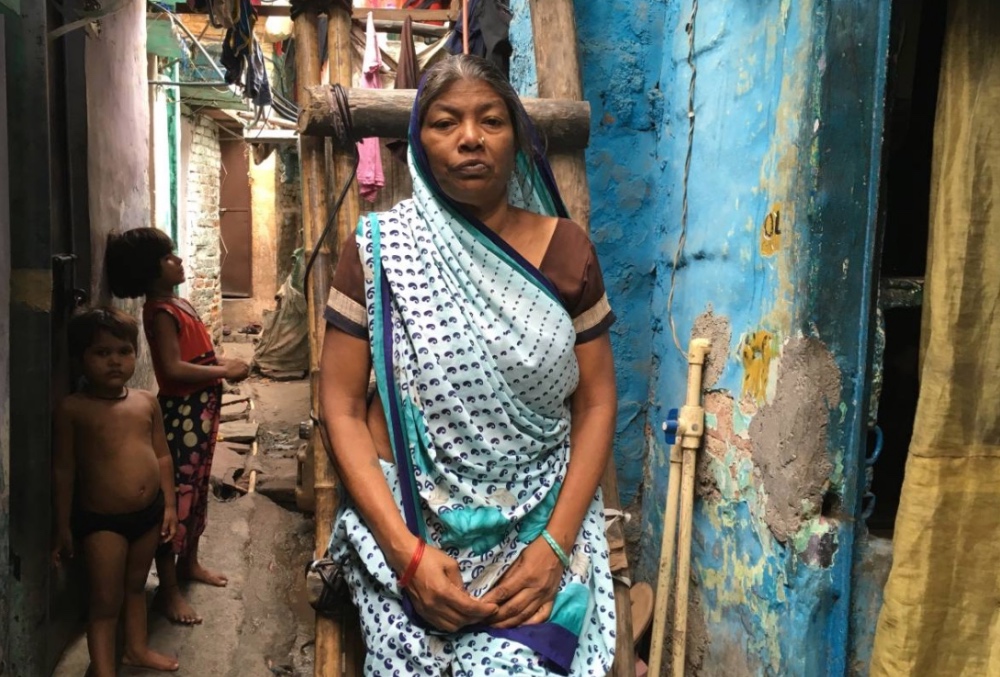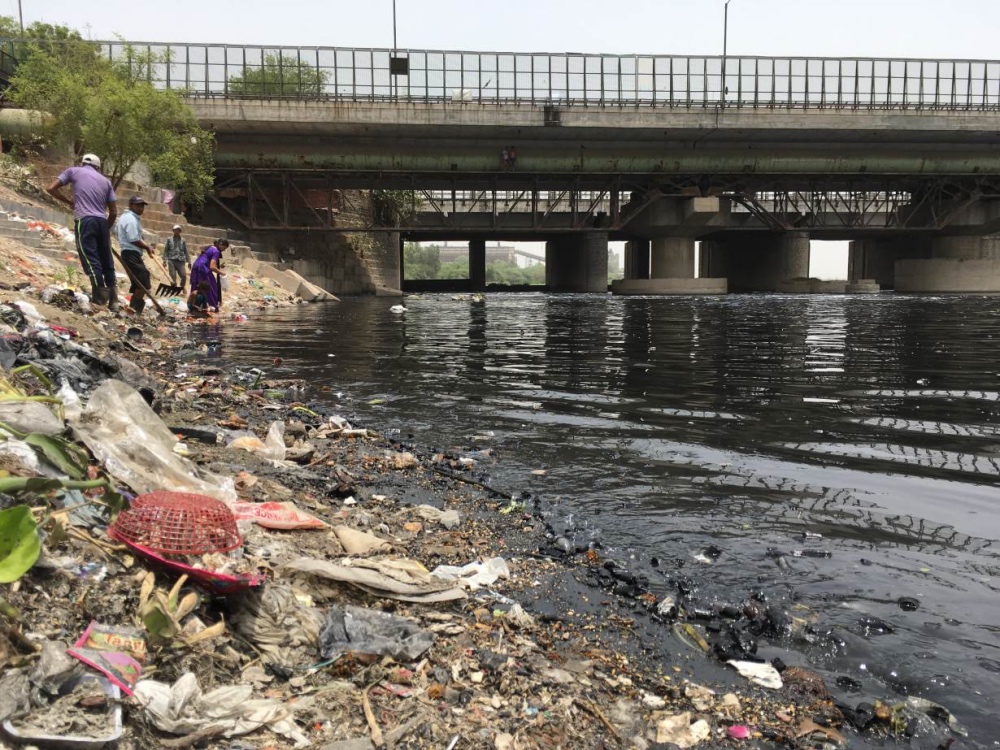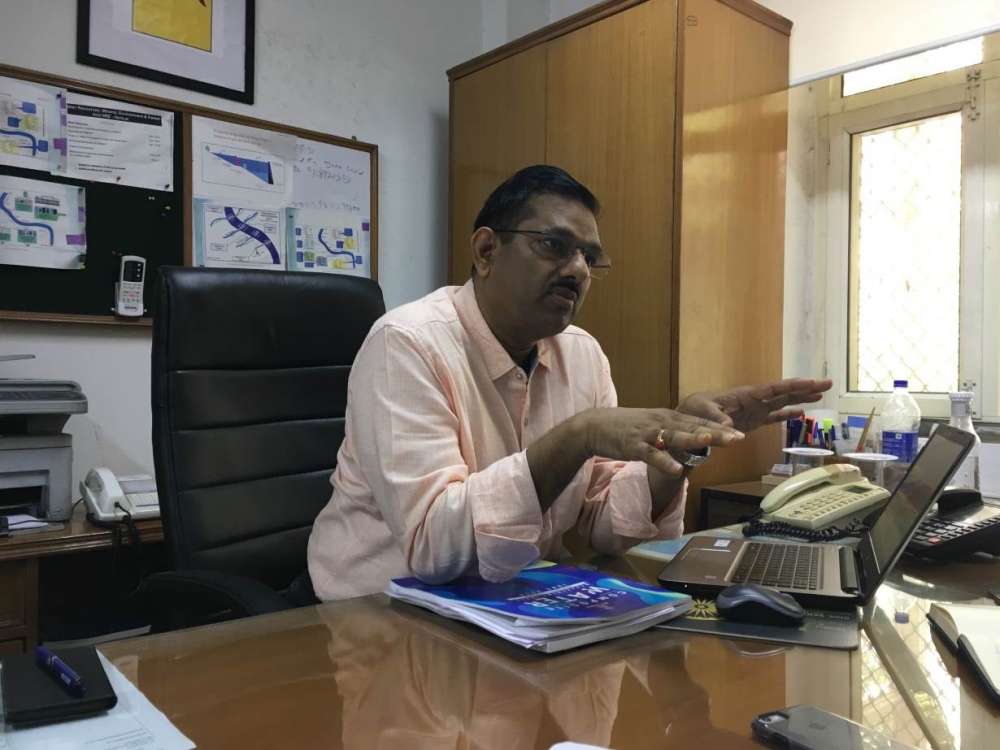
ANNIE BANERJI, of Thomson Reuters Foundation, reports from India…
New Delhi, India
Thomson Reuters Foundation
Weak infrastructure and a national shortage have made water costly all over India, but Sushila Devi paid a higher price than most. It took the deaths of her husband and son to force authorities to supply it to the slum she calls home.
“They died because of the water problem, nothing else,” said Ms Devi, 40, as she recalled how a brawl over a water tanker carrying clean drinking water in March killed her two relatives and finally prompted the government to drill a tubewell.
“Now things are better. But earlier…the water used to be rusty, we could not even wash our hands or feet with that kind of water,” she told the Thomson Reuters Foundation in Delhi.

Sushila Devi, who lost her son and husband in a water dispute, poses for a photo outside her one-room shanty in Delhi, India, on 26th June, 2018. PICTURE: Annie Banerji/Thomson Reuters Foundation.
India is “suffering from the worst water crisis in its history”, threatening hundreds of millions of lives and jeopardising economic growth, a government think-tank report said in June.
From the northern Himalayas to the sandy, palm-fringed beaches in the south, 600 million people – nearly half India’s population – face acute water shortage, with close to 200,000 dying each year from polluted water.
From the northern Himalayas to the sandy, palm-fringed beaches in the south, 600 million people – nearly half India’s population – face acute water shortage, with close to 200,000 dying each year from polluted water.
Residents like Ms Devi queue daily with pipes, jerry cans and buckets in hand for water from tankers – a common lifeline for those without a safe, reliable municipal supply – often involving elbowing, pushing and punching.
On the rare occasions water does flow from taps, it is often dirty, leading to disease, infection, disability and even death, experts say.
“The water was like poison,” said Ms Devi, who still relies on the tanker for drinking water, outside her one-room shanty in the chronically water-stressed Wazirpur area of the capital Delhi.
“It is better now, but still it is not completely drinkable. It is alright for bathing and washing the dishes.”
Water pollution is a major challenge, the report said, with nearly 70 per cent of India’s water contaminated, impacting three in four Indians and contributing to 20 per cent of the country’s disease burden.
Yet only one-third of its wastewater is currently treated, meaning raw sewage flows into rivers, lakes and ponds – and eventually gets into the groundwater.
“Our surface water is contaminated, our groundwater is contaminated. See, everywhere water is being contaminated because we are not managing our solid waste properly,” said the report’s author Avinash Mishra.
Meanwhile, unchecked extraction by farmers and wealthy residents has caused groundwater levels to plunge to record lows, says the report.
It predicts that 21 major cities, including New Delhi and India’s IT hub of Bengaluru, will run out of groundwater by 2020, affecting 100 million people.

Workers clean the Yamuna River in New Delhi, India, 25th June, 2018. PICTURE: Annie Banerji/Thomson Reuters Foundation
The head of WaterAid India VK Madhavan said the country’s groundwater was now heavily contaminated.
“We are grappling with issues, with areas that have arsenic contamination, fluoride contamination, with salinity, with nitrates,” he said, listing chemicals that have been linked to cancer.
Arsenic and fluoride occur naturally in the groundwater, but become more concentrated as the water becomes scarcer, while nitrates come from fertilisers, pesticides and other industrial waste that has seeped into the supply.
The level of chemicals in the water was so high, he said, that bacterial contamination – the source of water-borne diseases such as diarrhoea, cholera and typhoid – “is in the second order of problems”.
“Poor quality of water – that is loss of livelihood. You fall ill because you don’t have access to safe drinking water, because your water is contaminated.”
– VK Madhavan of WaterAid India.
“Poor quality of water – that is loss of livelihood. You fall ill because you don’t have access to safe drinking water, because your water is contaminated.”
“The burden of not having access to safe drinking water, that burden is greatest on the poor and the price is paid by them.”
Crippling water problems could shave six per cent off India’s gross domestic product, according to the report by the government think-tank, Niti Aayog.
“This six per cent of GDP is very much dependent on water. Our industry, our food security, everything will be at stake,” said Mr Mishra.
“It is a finite resource. It is not infinite. One day it can (become) extinct,” he said, warning that by 2030 India’s water supply will be half of the demand.
To tackle this crisis, which is predicted to get worse, the government has urged states – responsible for supplying clean water to residents – to prioritise treating waste water to bridge the supply and demand gap and to save lives.
Currently, only 70 per cent of India’s states treat less than half of their wastewater.
Every year, Bengaluru and New Delhi make global headlines as their heavily polluted water bodies emit clouds of white toxic froth due to a mix of industrial effluents and domestic garbage dumped into them.

Avinash Mishra, the author of a government think-tank report that warns about India’s ‘worst water crisis in its history’, at his office in New Delhi, India, 26th June, 2018. PICTURE: Annie Banerji/Thomson Reuters Foundation.
In Bengaluru – once known as the “city of lakes” and now doomed to go dry – the Bellandur Lake bursts into flames often, sending plumes of black smoke into sky.
The Yamuna river that flows through New Delhi can be seen covered under a thick, detergent-like foam on some days.
On other days, faeces, chemicals and ashes from human cremations float on top, forcing passers-by to cover their mouths and noses against the stench.
That does not stop 10-year-old Gauri, who lives in a nearby slum, from jumping in every day.
With no access to water, it is the only way to cool herself down during India’s scorching summers, when temperatures soar to 45 degrees Celsius (113 Fahrenheit).
“There usually is not enough water for us to take a shower, so we come here,” said Gauri, who only gave her first name, as she and her brother splashed around in the filthy river.
“It makes us itchy and sick, but only for some time. We are happy to have this, everyone can use it.”





